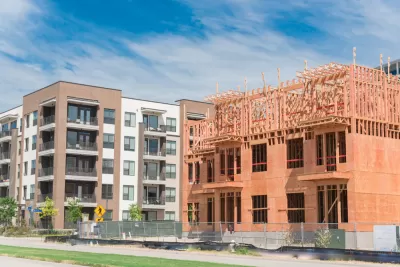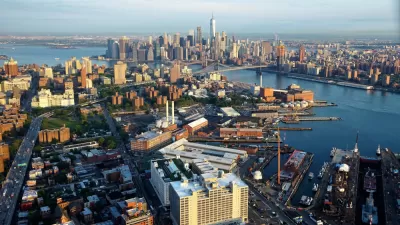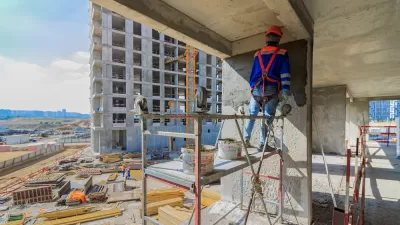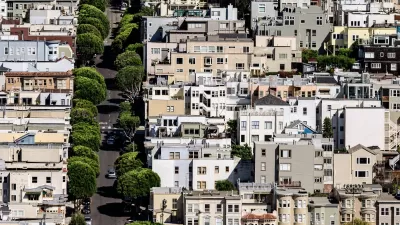A study that made the rounds as a working paper at the beginning of 2019 has now been published in a peer-reviewed journal.

A study years in the making has added a new reference in the debate about the effects of large new apartment developments on low-income neighborhoods located nearby.
The study, titled "Local Effects of Large New Apartment Buildings in Low-Income Areas," was published by The Review of Economics and Statistics on May 6, but the research first attracted attention it the beginning of 2019. Planetizen blogger Michael Lewyn introduced the research findings (in what was then a working paper) as potential ammunition for the YIMBY response to rising housing costs in large cities with restrictive zoning codes and low amounts of residential development.
Now published in a peer-reviewed journal, the research finalizes its findings, as summarized in the study's abstract: "New buildings decrease rents in nearby units by about 6 percent relative to units slightly farther away or near sites developed later, and they increase in-migration from lowincome [sic] areas."
The researchers argue that new apartment developments achieve price reductions in nearby neighborhoods by absorbing high-income households and increasing local housing stock. "If buildings improve nearby amenities, the effect is not large enough to increase rents. Amenity improvements could be limited because most buildings go into already-changing neighborhoods, or buildings could create disamenities such as congestion," reads the abstract.
For more of the latest on the subject, researchers at the University of California, Los Angeles recently published a survey of recent research on the consequences of new development for local housing markets.
FULL STORY: Local Effects of Large New Apartment Buildings in Low-Income Areas

Manufactured Crisis: Losing the Nation’s Largest Source of Unsubsidized Affordable Housing
Manufactured housing communities have long been an affordable housing option for millions of people living in the U.S., but that affordability is disappearing rapidly. How did we get here?

Americans May Be Stuck — But Why?
Americans are moving a lot less than they once did, and that is a problem. While Yoni Applebaum, in his highly-publicized article Stuck, gets the reasons badly wrong, it's still important to ask: why are we moving so much less than before?

Using Old Oil and Gas Wells for Green Energy Storage
Penn State researchers have found that repurposing abandoned oil and gas wells for geothermal-assisted compressed-air energy storage can boost efficiency, reduce environmental risks, and support clean energy and job transitions.

Updating LA’s Tree Rules Could Bring More Shade to Underserved Neighborhoods
A new USC study finds that relaxing Los Angeles’ outdated tree planting guidelines could significantly expand urban tree canopy and reduce shade disparities in lower-income neighborhoods, though infrastructure investments are also needed.

California's Canal Solar Projects Aim to Conserve Resources and Expand Clean Energy
California’s Project Nexus has begun generating electricity from solar panels installed over irrigation canals, with researchers and state agencies exploring statewide expansion to conserve water and boost clean energy production.

HHS Staff Cuts Gut Energy Assistance Program
The full staff of a federal program that distributes heating and cooling assistance for low-income families was laid off, jeopardizing the program’s operations.
Urban Design for Planners 1: Software Tools
This six-course series explores essential urban design concepts using open source software and equips planners with the tools they need to participate fully in the urban design process.
Planning for Universal Design
Learn the tools for implementing Universal Design in planning regulations.
Heyer Gruel & Associates PA
City of Moreno Valley
Institute for Housing and Urban Development Studies (IHS)
City of Grandview
Harvard GSD Executive Education
Salt Lake City
NYU Wagner Graduate School of Public Service
City of Cambridge, Maryland





























